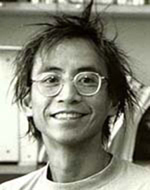Bio: Pao C. Chau received his Ph.D. from Princeton University in 1980. Chau has contributed to numerous publications and is widely known for his dedications to students. In 2001, he received the Jacobs School Teacher of the Year for Chemical Engineering.
Research: Professor Chau is a chemical engineer who is interested in biotechnology and cellular engineering. He works on large-scale mammalian cell cultures, membrane bioreactors, and cell cycle kinetics. Chau is now developing a second-generation 'hollow-fiber bioreactor' aimed at helping patients experiencing liver failure stay alive until a replacement organ can be found for transplant. The short-term goal is to keep such patients viable for a week, but one day it is hoped that more sophisticated machinery could enable survival long enough for the liver, which has unusual regenerational capacities, to have time to repair itself. A bioreactor includes a bank of living organ cells brought into contact with fluids via artificial capillaries. In this case blood plasma is cleaned by liver cells derived from human cell lines. In other work Chau is directing a project to probe transcriptional and post-transcriptional regulations. The aim of the project, funded by the National Science Foundation, is to perfect a technique for gathering data about single cells. Conventional techniques that measure the qualities of populations of multiple cells often mask critical information, failing to distinguish, for example, the discrepant impacts of a drug or other therapy on cells in different life-cycle stages, states of pathology, or characterized by other variances. In flow cytometry, the technique on which Chau is working, a stream of individual cells drops faucet like in front of a rapidly blinking laser timed to flash at each cell one by one. A sensor picks up data from the 10-15 micron wide stream. Chau complements data and system analyses with mathematical models.
|

